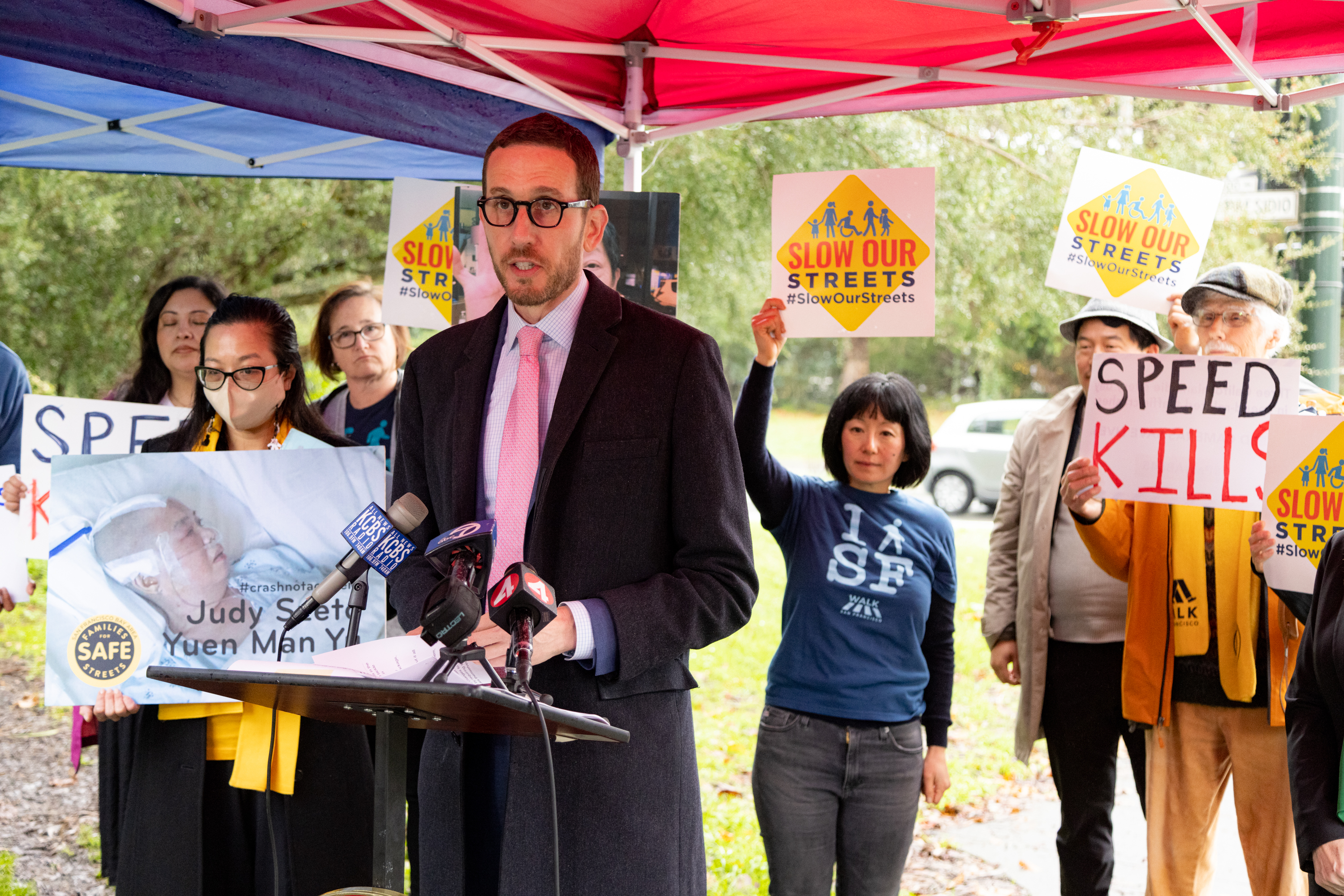A California lawmaker announced a bill Wednesday that would require new passenger vehicles and large trucks sold in California to be equipped with technology that would prevent them from going more than 10 miles an hour above the speed limit.
State Sen. Scott Wiener, who represents San Francisco, announced the legislation as part of a larger package of street safety proposals in response to surging traffic deaths in the U.S.
“We have seen far too many people being seriously injured and dying on our streets,” Wiener said.
If passed, Senate Bill 961 would require vehicles, beginning with model year 2027, that are manufactured or sold in California to come with a speed governor, also known as an intelligent speed limiter. It would make California the first state in the nation to mandate this technology.
These devices match a vehicle’s global positioning system (GPS) location with a database of speed limits to figure out what speed a vehicle should be traveling at during any given time. They also sometimes use onboard cameras to read speed limit signs. With this information, the devices are then able to prevent the driver from speeding more than 10 miles an hour above the speed limit.
Drivers would be able to temporarily override the speed governor device, according to the proposal.
The requirement for speed governors would not apply to emergency vehicles.
Deadly high-speed collisions, including an August 2022 100 mph crash in Los Angeles that killed six people and a 2021 fatal Lamborghini incident illustrate the necessity of preventing cars from going too fast, according to Marc Vukcevich, Director of State Policy for Streets for All.
“There’s no reason that a vehicle should be able to exceed the speed limit,” Vukcevich said.
Jenny Yu, whose mother sustained life-changing injuries after a driver hit her on San Francisco’s Park Presidio Boulevard in 2011, voiced full-throated support for the measure.
“Pedestrians become innocent carnage and collateral damage when so many people are speeding,” Yu said.
Representatives of the auto industry contacted by The Standard did not reply to a request for comment. But the bill may very well face headwinds from manufacturers bristling at new regulations, and consumers concerned with added restrictions.
When asked about this possible opposition, Wiener drew a comparison with seat belts. In the 1980s, most Americans opposed seat belt mandates, according to Business Insider. Now, people see them as an essential safety feature, Wiener said.
“It’s not in any way an overreach, it’s common sense and long overdue” Wiener said about the speed limiter proposal. “There is no reason why people should be driving 20, 30, 40 miles over the speed limit, that’s just dangerous.”
California Sen. Roger Niello, the Republican Vice-Chair of the Transportation Committee, where Wiener’s bill is headed, sees things differently.
“Mandating speed-limiting controls on all vehicles, when the vast majority of drivers are not reckless, is just simply government overreach,” Niello said. “The solution is more law enforcement on our streets with severe consequences to those who show complete disregard for traffic laws.”
This July the European Union will begin requiring all new vehicles sold in its territory to come installed with an ‘intelligent speed assistance’ device. The European regulation gives auto manufacturers the choice of installing systems that would actively prevent drivers from going too fast—like Wiener’s legislation proposes—or using passive devices that alert drivers when they’re going too fast but that don’t impact the vehicle’s speed.
New York City outfitted 50 municipal vehicles with devices that limited speed in 2022, and local leaders celebrated the resulting 99% compliance with speed limits during the pilot. Each vehicle in the New York program had a button that could temporarily disable the speed reduction for 15 seconds, with the idea that it could be helpful in some hazardous situations. The city said it aims to broaden its rollout of speed limiters to 7,500 municipal vehicles.
A New York State bill proposes installing speed limiter devices in the vehicles of chronic speeders.
Meanwhile, many auto manufacturers already offer U.S. customers features that limit vehicle speed, according to the National Transportation Safety Board. Often that comes in the form of features marketed to parents worried about their teenage children driving recklessly. These teen driver settings—offered by Ford, General Motors and Volvo—allow parents to set a maximum speed on their child’s vehicle.
Honda offers an adjacent technology that uses an onboard camera to read speed limit signs and display them for the driver.
An average of 3,933 people were killed in California traffic fatalities each year between 2017 and 2021, according to the state Office of Traffic Safety. About one third of those deaths came in speeding-related fatalities.
In San Francisco, the city has spent hundreds of millions of dollars in the past decade aimed at eliminating traffic deaths, but the number of fatalities remains basically unchanged.
Research has shown that the faster a vehicle is traveling at the time of a collision, the more severe the consequences are, according to the Institute for Road Safety Research. At 25 mph, about 90% of pedestrians struck by a vehicle survive a collision. But at 50 mph the number of survivors is less than 50%.
Wiener’s bill would also require large trucks sold or registered in California to be equipped with side guards to prevent vehicles, pedestrians or bicyclists from being swept under the vehicle’s trailer during a collision.
